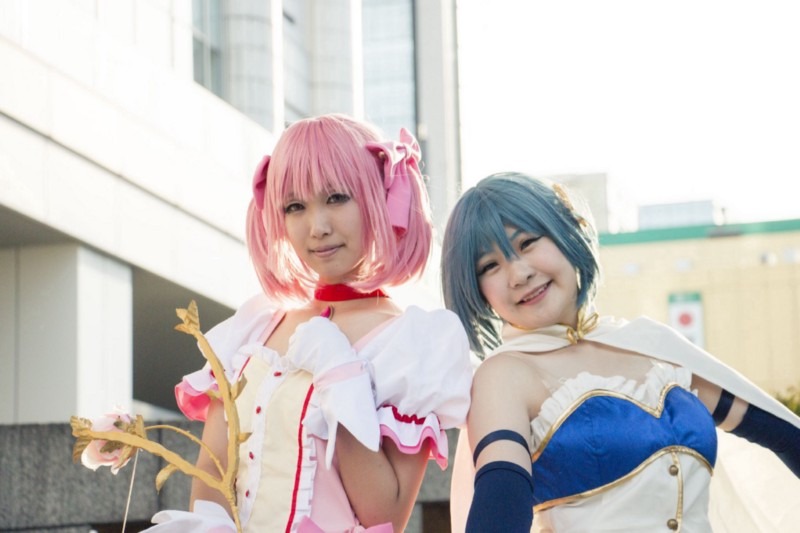She has over 170,000 uploaded YouTube videos, 1,000,000
created artworks and 100,000 original songs under her name, some of which have been top
karaoke picks in Japan for several years in a row. She has 2,3mn (and growing!)
followers on Facebook — more than any other individual Japanese pop star or pop
group. She has sold out concerts around the world and has served as the face
for such top global brands as Louis Vuitton, Google, and Toyota.
But she’s not human.
Rather, “she” is a digitally synthesised voice
encapsulated in a crowd-sourced humanoid persona. And if that description is
not illustrative enough, here’s one that is: she appears in “live shows” as a
hologram.
Hatsune Miku,
trademarked by exaggerated turquoise pigtails and a schoolgirl demeanour, is
the world’s first union of fabricated digital voice sporting a virtual
character body. Crypton
Future Media, a big-time Sapporo-based sound software contractor, created
Miku in 2007, using Yamaha Corporation’s “vocaloid” technology (a singing voice
synthesizer), and subsequently released her as a computer software application
to consumer markets.
Within just one month, the product became the
highest-grossing software at that time with revenues of ¥57.5mn, and its star
character Hatsune Miku came into a fortune of diehard fans.
The Hatsune Miku hype in Japan is perfectly explainable,
considering an intensifying local idol culture.
Idol culture in Japan, which began in the
1970s as a phenomenon surrounding foreign stars, has since escalated to
domestically produced AKB48 proportions
in present times. The trend reflects an increasing preference for “artificial
intimacy” in Japanese society. Alongside and intertwined with the fascination
for anime and manga, a fascination with “cute” girls and boys is yet another
outlet for expressing fetish imagination otherwise suppressed in Japanese
public life.
Without getting into the disturbing details of
the socially constructed criteria for idols (especially those of female ones),
Hatsune Miku in fact represents market power superiority over her living and
breathing counterparts. This is due to her “natural ability” to smoothly
satisfy consumer needs.
Because she is not human, Miku is
understandably exempt from the typical hazards our human pop stars
face — pitchy days, unattainable vocal ranges, and fatigue for instance — thus
offering her fans, who write her music, immense creative freedom and
listening/viewing pleasure.
Even more significant than the breadth of her
musical capabilities, Hatsune Miku’s “life” and personality are left entirely
for her consumers to draw up. And as evidenced by the multitude of fan fiction
and cyber-weddings she is featured in, Hatsune Miku has unlocked a level of
intimacy impossible to achieve between human idols and their fans.
All this of course is no “new” story,
considering that Miku, despite her arbitrary age of 16, has been around for
seven years. What is new, however, is that in the past three years a greater
share of the demand for the blue-haired vocaloid has come from outside Japan.
It seems idol culture and a hunger for futuristic lifestyles are no longer
bound within domestic borders, or even those of Asia for that matter.
Most of Miku’s Facebook hits come from Mexico
City, and her 2011 Los Angeles performance was enjoyed by some 5,000 glow-stick-waving
fans and another 160,000 online viewers. The concert included a high-profile
commission to show off Marc Jacobs designs by means of a touring opera.
Perhaps the rest of the world, too, is growing
tired of human pop stars who only meet — but do not exceed — expectations for
idols.
A
new generation of consumers actively admits it is willing to empty its
wallet for an entity that needs no time to learn routines and work on her
profession, and one whose stardom comes at no cost of privacy.
English was added to Miku’s official singing
languages last year, and this is just the start of her solidification in
international markets. As intangible as she may be at her essence, Hatsune
Miku’s brand equity and staying power is very real, indeed.
Originally published by Debbie Howard (25th March 2016), last updated in May 2019.
Mika Fukuda, Intern at The Carter Group, contributed to this article.
Debbie Howard is
Chairman of CarterJMRN, and President Emeritus of the American
Chamber of Commerce in Japan. She is also a Visiting Professor of
marketing at Sophia University.
CarterJMRN is a strategic market
research agency that has been helping clients with consumers and businesses in
Japan and beyond since 1989.
We believe that,
although the terrain you face in building a successful marketing strategy and
activation path sometimes seems obscure, the path to success is knowable and
that the consumer is the guide who will show you the way.
Find out more
and get in touch on our blog
